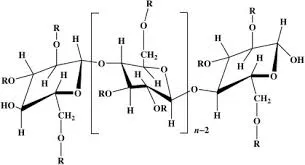
Dec . 12, 2024 10:13 Back to list
different grades of hpmc
Understanding Different Grades of HPMC Applications and Implications
Hydroxypropyl Methylcellulose (HPMC) is a widely used cellulose ether that plays a crucial role in various industries, including pharmaceuticals, food, cosmetics, and construction. Its versatility stems from its unique chemical structure, which allows for a range of grades, each tailored to meet specific requirements in different applications. In this article, we will explore the various grades of HPMC, their characteristics, and their implications for industrial usage.
What is HPMC?
HPMC is derived from cellulose, a natural polymer, through a series of chemical modifications that introduce hydroxypropyl and methoxy groups into its structure. This modification results in a compound that is soluble in water and has a wide array of functional properties. The physical and chemical properties of HPMC can be significantly influenced by the degree of substitution of the hydroxypropyl and methoxy groups, leading to the development of different grades that cater to specific applications.
Different Grades of HPMC
1. Pharmaceutical Grade HPMC This grade is highly purified and meets stringent regulatory standards. It is predominantly used in the formulation of controlled-release tablets, as it can modulate drug release rates effectively. Its ability to form gels and stabilize emulsions makes it a valuable excipient in the pharmaceutical industry.
2. Food Grade HPMC In the food industry, HPMC is used as a thickener, emulsifier, and stabilizer. Food-grade HPMC is safe for consumption and is often utilized in gluten-free products, providing the necessary texture that is otherwise hard to achieve without gluten.
3. Cosmetic Grade HPMC This grade is designed for use in personal care products, such as creams, lotions, and hair care formulations. With its moisturizing properties and ability to enhance the texture of cosmetics, HPMC contributes to improved product performance and user experience.
different grades of hpmc

4. Industrial Grade HPMC In the construction industry, industrial-grade HPMC is used as a water-retention agent in cement and gypsum-based products. It enhances workability and improves the adhesion of mortars and plasters. Its thickening properties also help in maintaining the consistency of various industrial formulations.
Characteristics of HPMC Grades
The different grades of HPMC exhibit varying characteristics based on their chemical composition. For instance, the viscosity, gel formation capability, and thermal stability can all differ significantly between grades, impacting their performance in specific applications. Lower viscosity grades are typically preferred in applications where a lighter texture is needed, while higher viscosity grades are ideal for thicker formulations.
Implications for Industry
The selection of the appropriate HPMC grade is crucial for achieving the desired functionality in various applications. Manufacturers must consider factors such as solubility, viscosity requirements, and regulatory compliance when choosing a grade. For example, in pharmaceuticals, using a non-pharmaceutical grade HPMC can lead to inconsistencies in drug release profiles, potentially impacting efficacy and patient safety.
Moreover, the growing emphasis on sustainability and natural ingredients is driving innovations in HPMC formulations. Manufacturers are exploring bio-based alternatives to traditional HPMC and developing new grades that align with consumer preferences for environmentally friendly products.
Conclusion
In conclusion, the diverse grades of HPMC offer numerous benefits across various industries, each tailored to meet specific needs. Understanding the differences in properties and applications of HPMC grades is essential for manufacturers to optimize performance and comply with regulatory standards. As industries continue to evolve, the importance of HPMC will only grow, making it a key component in both existing and emerging applications.
-
Versatile Hpmc Uses in Different Industries
NewsJun.19,2025
-
Redispersible Powder's Role in Enhancing Durability of Construction Products
NewsJun.19,2025
-
Hydroxyethyl Cellulose Applications Driving Green Industrial Processes
NewsJun.19,2025
-
Exploring Different Redispersible Polymer Powder
NewsJun.19,2025
-
Choosing the Right Mortar Bonding Agent
NewsJun.19,2025
-
Applications and Significance of China Hpmc in Modern Industries
NewsJun.19,2025







